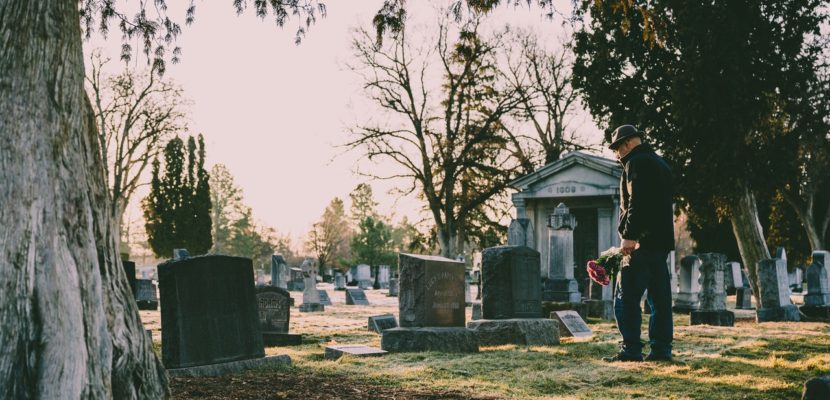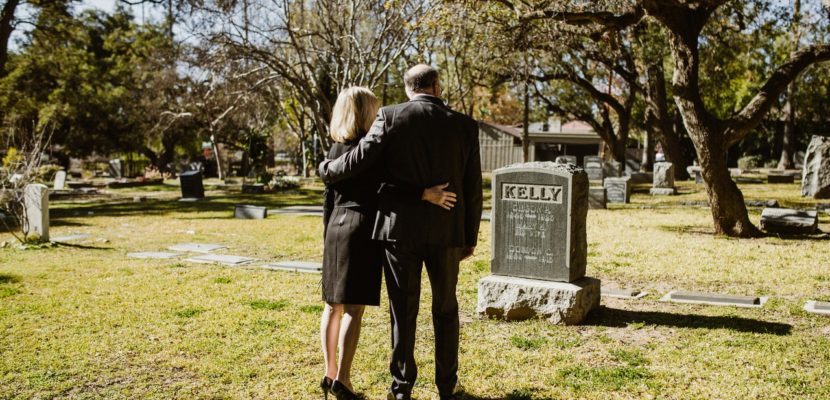GRIEF AFTER SUICIDE
By Dr Bill Webster
“You never get over a suicide. You just learn to deal with it. The worst part is not knowing WHY. If I could just say he had been depressed, or seeing a shrink, or anything that might have explained it, it would have been better. But I just don’t know why he did it” (Julie, whose teenage son hanged himself.)
Jim’s 29-year-old son had suffered from severe manic depression for 4 years when he jumped from a high-rise apartment building. Jim DID know a reason, but found that to be of little comfort:
“It was just unbelievable to me. Why did he do this? Why didn’t he come to me for help? And then I felt anger. For four and a half years, I had done everything under the sun to help him. What else could I have done? I felt very guilty because if I could have helped my son, I would have done anything.”
While we often correctly say that “there is no such thing as more or less difficult, it is just different”, there are some situations that are uniquely difficult. One is the loss of a child. Another is a death by suicide. And when these two situations come together, as it did for both Julie and Jim it can be a devastating blow to “suicide survivors” (this term for the purposes of this article refers to those who have lost someone to suicide.)
It is not my intention to outline the many and varied theories of suicidal behavior, many of which are conflicting. The focus here is on how we help support suicide survivors through their unique process. There are some sobering facts, however:
- Every day, throughout the world, over 1000 people complete suicide
- It is estimated that for every suicide there are 15 unsuccessful attempts
- White males over the age of 50 makeup approximately 10% of the population but account for 28% of the total suicide deaths
- Men complete suicide three times more than women, but women attempt suicide five times more than men. Most attempts of suicide are made by women in their 20′s and 30′s
- Suicide tends to run in families, but it is learned not genetic. Often it is unconsciously suggested as a means of coping with overwhelming moments.
- People who talk about suicide complete suicide. Suicide RARELY happens without warning
When someone completes suicide, the mourning process for survivors is different in at least 2 ways. 1) The period of numbness and disbelief will be longer, extending the duration of the grief process; and 2) there is the added burden of understanding the motivation for the death.
For suicide survivors, the grief process is particularly long given the complexity of issues survivors struggle with. This means that one year after the death, the griever may still be in the depths of their grief, long after society expects people to be over their grief. Jim observes:
“I think before the grief really set in, it took over a year. I mean there are times when I still think this is unbelievable. But I think it took a year for me to really believe it. And I think that it was because I surrounded myself with him, looking at pictures, and talking about him to everyone that helped me come to terms with it in such a short period of time. I don’t know if a year is a short period of time or not, but it is very real to me today.”
For this reason, patience on the part of the helper is most important. There is no way to speed up the grief process. One can only go through it! Our task as helpers is to provide a safe and non-judgmental environment where the griever can begin the telling of “the story” (of the life and of the death) and develop effective tools for dealing with their grief.
Perseverance is also required because, for many survivors, basic trust in relationships with others was broken when the person contemplated suicide. This means that it is often difficult for them to establish new relationships because they feel cautious about reconnecting or new connections.
One of the differences in the grief process after suicide is that the act involves a conscious choice, which is different than sudden death through accidents or cancer. It is this element of “choice rather than chance” that complicates the grief process.
The following is an example of some of the things survivors might say to themselves that lead to these feelings:
Shame – “What would people think of me if they knew my child completed suicide ?”
Blame – “I must have been a lousy parent if my child killed himself !”
Guilt – “I noticed she was depressed. Why didn’t I do something ?”
Anger- “How could he do this to me?” You saw your loved one’s life as viable; they saw it differently and chose to die. That is difficult to understand and impossible to bear. So often, after disbelief, the next reaction is anger and outrage. The survivor may feel the deceased acted with contempt towards them. Or perhaps they perceived themselves as unloved. Either way, we ask why they didn’t see how hurtful this would be, or why they did not seek alternatives.
Fear – “Will my other children end up killing themselves too?”
Relief – “It’s finally over !” (This feeling is more evident in cases where the person who died was abusive or had a long-standing difficult history of mental illness.)
Rejection – “I guess he didn’t really care about me or he would still be alive.”
Hopelessness- “What’s the point in going on?”
Confusion – “How could this have happened? I just saw her yesterday and she looked fine.”
Isolation – “I feel so ashamed and guilty about Joe’s death that I don’t want to see anyone. I bet they blame me for his death.”
There are four areas of discussion and counsel that are particularly helpful to suicide survivors:
- Listening to the story of the death
- Expressing and understanding feelings
- Anniversaries and special occasions
- Stress, coping, and using support systems
1. Listening to the Story.
To facilitate the telling of the story of the death, it is important to create a supportive atmosphere through gentle probing. We have included a number of questions that we commonly ask survivors to assist them in the telling of the story. These appear in the Appendix at the end of this chapter. The suggested questions in the appendix could leave the impression of an interrogative approach, if used verbatim, without proper nuances in timing and pacing.
The point to be made in asking these types of questions is that the story needs to be protracted and spun out, through a recounting of the many details of what happened.
Many survivors feel uncomfortable talking to friends about the details of the suicide as they feel that these details are too horrific for others to absorb. Families sometimes avoid talking about difficult and painful parts of the story, even in discussions with one another. The fear is that these difficult elements may be too over-overwhelming for family members to bear because of their own grief. As bereavement counselors, it is our job to be able to tolerate the intensity of emotion and detail that the telling of the story can bring about.
The initial goal is to have the family tell the story of the death of their relative or friend. It is through recounting the details that a number of key processes are likely to occur, these being:
- Each person will begin to ascribe meaning to the suicide ( a beginning for the ever-present question “Why?”)
- Each person will begin to experience some relief through acknowledging, identifying, and working through their feelings of loss.
- Each person will begin to create their own understanding of what has happened.
Further relief will occur through the experience of talking in a supportive atmosphere that allows the expression of all the details, feelings, and thoughts related to the death.
One of the advantages of dealing with issues related to grief through suicide, in a group context, (familial or otherwise), is that the isolation that this grief can produce will be reduced through people coming together to talk about their experience.
From our experience, families who feel they have had an opportunity to tell the whole story, related to the death, and who feel their story has been validated, are better able to move on to issues in the present. Families who have not had assistance in understanding and making sense of the death are far more likely to get stuck in the repetitive talking about the death without resolution.
Going over the events in detail allows family members to hear each other’s perspectives, to appreciate that everyone is in pain and to realize that they may all be at different stages in their grief, with each attributing a different meaning to what has happened.
It is helpful to encourage tolerance for differences by helping members listen to each other’s different explanations and interpretations and to accept that each one’s perspective and rate of acceptance of what is happening is okay. The tendency can be for each person to want to convince others that his or her version of the “truth” is the only “truth”. Families who are struggling to understand the death, often ask counselors to answer the question of why did she or he kill themselves. The task is to educate the family through providing information based on other families’ experiences e.g. “Other families have told me but this won’t necessarily fit for you.”
As you listen to the story, it is useful to prepare yourself by having a clear understanding of your own beliefs and values to do with suicide. One way of orienting yourself to these values is to examine and explore some of the popular myths regarding suicide e.g. “A person who completes suicide is mentally ill.” Although this is considered to be more false than true, if the family has decided that their relative was mentally ill and is now free of the pain of that illness, it will be of no comfort to them if you espouse your view that John was not necessarily mentally ill when he hung himself. It is important that this understanding of one’s own values and beliefs pertaining to suicide are examined prior to working with families so as not to interfere with the process.
There are some important differences for a person grieving a death through suicide versus other types of loss. This is not to minimize the effect of other types of loss but more to raise awareness for the helper of certain processes and feelings which will be more prevalent and harder to come to terms with for family members.
Expressing and Understanding Feelings
As mentioned previously, feelings that are likely to be more intense after a suicide than after most other types of loss include the following:
Shame Relief
Blame Rejection
Guilt Hopelessness
Fear Confusion
Anger Isolation
Often the sheer intensity and complexity of such feelings cause concern for the griever that they might be going crazy. This intensity needs to be normalized when dealing with death through suicide.
When talking about any of these feelings it is important to validate and acknowledge how painful these feelings can be, while at the same time normalizing their intensity. One way to do this is to reassure the family that such feelings change over time both in frequency and intensity. To create a concrete example of this change over time, ask the family which feelings were most prevalent for them e.g. month ago, as compared to today.
The mix of emotions can be so overwhelming at times that it may be difficult to get people to identify just what it is they are feeling. Questions such as “What was most difficult for you over the past week?” will often elicit a recounting of a scenario that gives you a clue as to one or two specific emotions that were being experienced. This will provide you with the opportunity to explore these feelings and help them accept as well as understand the origins of these feelings.
This can be the first step towards the resolution of these feelings and moving on. This can be followed by a discussion of how to cope effectively with these feelings.
Although not everyone will necessarily be troubled by each and every feeling listed below, these are the feelings that survivors find most challenging to cope with, from our experience.
SHAME
This feeling manifests itself as a result of the family’s perception that they failed in some way.
They often feel reproached by others, think that they are held in disrepute, and can feel disgraced by what has happened.
Shame can be rooted in long-held beliefs such as it is wrong or a sin to take one’s own life. One of the experiences that families describe that increases their sense of shame, is the worry that they went through as to whether they would be allowed to bury their relative on sacred ground. Even though this unwillingness to bury those who have contemplated suicide in sacred ground is rare today many families worry about this nonetheless as it is the decision of the individual minister, priest, or rabbi to decide wheat the person will be buried on holy ground.
It is useful to draw out examples of where friends, family, clergy, and others have been strongly supportive to them, thus proving by their actions that they do not see them as disreputable or disgraceful.
BLAME
Families who lose someone to suicide often feel blamed. This perception that they are responsible for the death can come from within the family or from outside of the family. This is particularly true when the family has a history of abusive behavior. In trying to make sense of the death, people will sometimes blame (scapegoat) a relative for not having done more to prevent the suicide. This criticism may be expressed to a member who is attending the session or it may involve an absent relative.
As the helper, you need to allow expression of these thoughts but also have the person being scapegoated say how they feel about being blamed. Questions such as “what happened the time before when Joan was depressed or took pills? or “Just because Joe’s girlfriend broke up with him, did any of you expect him to take his own life?” can help bring things back into perspective.
This sense that others are saying (or thinking) that a certain relative(s) or friend is at fault for the death, can be both real and imagined i.e. “If Joe had not been so neglectful of Sally, she would not have killed herself.” is one example. This kind of thought or statement assumes that suicide is a cause-and-effect situation, meaning that one singular circumstance caused the death. Suicide is a complex phenomenon, so it is best not to oversimplify its causes.
”Jane must think I’m a terrible mother because my son killed himself” is another example of blaming self-talk often evident in survivors. How does one help families with their sense of blame for the death? Point out to the family that scapegoating is partly due to their need to have an answer – to make sense out of something that is senseless, but also that it is hurtful to the person being blamed. We find that this part of the process is initially cognitive, meaning that survivors are able to think they and others are not to blame long before they can feel this.
GUILT
“No, I can’t say that I feel any guilt” is often contradicted by the frequent use of the “should” word.
For example, “He had talked of suicide before. Therefore we should have done more to listen to him”. Another example of this type of thinking or self-talk is evident in the following statement: “We knew she was depressed and should have got her better professional help”
Although guilt serves a function for some people and is something they may need to dwell on for a while, eventually it is helpful to examine evidence to the contrary of their perceived shortcomings. Frequent reminders of the times when they went the extra distance to support their relative, will eventually assist them to move beyond this painful feeling.
Although it is important during the session to remind the family of the efforts they made to assist their relative, it is not necessary to convince the family of their, superhuman efforts to protect their relative, at times. The realization for some tends to come long after the series of sessions is completed.
ANGER
The level and persistence of this feeling make suicidal bereavement different from most other forms of loss. Although the survivor’s rage is often directed at multiple targets (incompetent doctors, demanding bosses, insensitive neighbors, uncaring relatives, an impotent God, etc.), the real source of much of the anger is the action of the person who chose to die and “abandoned, rejected or otherwise hurt me”
The work for the counselor is to help the griever identify as many people or situations with whom and about which they are angry. Anger at their relative is often the last area that survivors are able to acknowledge and work through. Permission to process this anger can be prompted with “what would you like to say to Joan if she could hear you now?” or “on a scale of one to ten, how angry are you with John?” Getting survivors to scale their feelings on a scale of 1 to 10 with one being the least intense and 10 being the most intense is often a quick and effective way for caregivers to understand the intensity of emotions survivors are feeling. Furthermore, this technique allows survivors to measure the constant ebb and flow of their emotions. The above example can be followed with a question such as “what would it take to help you move from a 9 to an 8 on the scale in terms of your anger?” If they are stuck for an answer, simple suggestions may be made such as writing a letter to the deceased or saying it out loud in private to help them move on the scale. Helping survivors recognize that their feelings change in intensity through using scaling questions gives them hope of change and relief in the future.
FEAR
Many families who have lost someone to suicide have a lot of anxiety and fear. This can be related to either of the following areas. One of these is a concern for the safety of other members.“Might they opt for suicide as an answer too?” is a question some families have.
Another fear is the worry that members cannot tolerate talking about certain aspects of the death and that doing so “will make them feel worse and they will be less able to get through each day.”
If we suspect the presence of these issues, we find that the most effective way of reducing anxiety is to address the issues directly. “Are you worried that Joan may hurt herself too?” followed by “Joan, do you have any thoughts of suicide?” gives the family permission to discuss and clarify their anxiety and fear.
The anxiety about each others’ ability to tolerate discussion of difficult aspects, is dealt with in the very early stages of the sessions by using questions that ask about all the details of the death. The usual reaction is a relief, and at times surprise, to get the unspeakable said. Listening to these fears can reduce them in size from the imagined insurmountable to the real and manageable.
It is useful to keep in mind that feelings of rejection can still occur even when the relationship to the griever was a conflictual one. The work here is to first listen to the family’s feelings of rejection, and then invite them to eventually think about other possible circumstances that contributed to the suicide, other than that the suicide was a personal action aimed against them. Most families are only able to consider these other explanations later on in the grief process.
HOPELESSNESS
Some people express their despair that life will never improve and they can be very persistent in maintaining this perspective. The urge for the helper can be to work hard at convincing them that life will eventually get better. If you follow this approach the survivor may feel that you do not understand the magnitude of their hopelessness, which may cause them to become further entrenched in this feeling, while you feel exhausted or impatient at their inability to change.
One of the ways for the helper to avoid this situation is to ask the griever questions that will help you understand the reasons for their feelings of hopelessness. These are likely to be related to the many other losses they have experienced as a result of the suicide. We refer to these losses as secondary losses. Examples of these secondary losses include loss of companionship, status, income, role (parent, lover, child, sibling, mentor, etc. ), safety, home, etc. Questions that help explore this area include “Could you share with me what else has changed in your life since the suicide?” Validate that these many losses are hard to bear. Ask the person “what is the hardest part of the day for them and conversely which parts of the day do they find easier to deal with?” As they tell you about these experiences watch for small shifts in mood (either in duration or intensity).
An example of a small shift that we often hear is that of the survivor going on a small outing such as coffee with a friend or going to a movie. This example allows you to ask the person whether they think they would have been able to make this effort at all, e.g. three months ago. Often survivors only become aware of this improvement in their level of functioning when we point this change out to them.
Acknowledge that progress is not consistent. One way to help survivors feel their experience is not unusual or unique is to share with them statements such as the following: “ Others tell us that there are times when they feel somewhat better and then unexpectedly they feel worse again.” Gently hold out hope by explaining that things gradually do get better even though feelings fluctuate.
CONFUSION
This state can manifest itself in a number of ways. Survivors are often so overwhelmed by their emotions that they are confused about what exactly it is that they are feeling. There can also be confusion about making the simplest decisions. Furthermore, there can be confusion in their relationships with others. Often relationships that were previously stable and supportive, may no longer be so.
The main work here is to help survivors understand that this confusion is to be expected given the traumatic events they are going through; that they are not going crazy and that with time, they will regain their ability to manage daily tasks, routines, and relationships.
One woman was convinced that she needed psychiatric care when her concentration became so bad, months after the death, that she could not make a simple choice over the purchase of a cosmetic. She felt less anxious about her confusion when she was reassured that this experience is not unusual.
It is confusing when people who have been friendly and thoughtful in the past, react differently now, particularly at a time when grievers feel that they need the love and support of family and friends. This issue will be addressed further in the next section.
ISOLATION
Most survivors feel extremely isolated after losing someone to suicide. The reasons for this are several. Firstly, a suicide in a family can lead to blaming one another for not preventing the suicide. Thus rifts can occur between family members, distancing them from one another and exacerbating feelings of isolation.
Feelings of isolation also result from secondary losses. For example, if a woman loses her husband to suicide and their social context was comprised of themselves and other couples, she may feel very isolated and alone when in the presence of couples. Added to this, loss by suicide often causes overwhelming feelings of grief for long periods of time, resulting in grievers finding it hard to engage in social activities leaving them more isolated. Often, friends and family feel strained in the presence of someone who is depressed and grief-stricken and inadvertently stops inviting this person to events.
This can feel like a further rejection for the griever and it is important to process these secondary losses.
Grief is a selfish process and friends need to understand that the ability of the survivor to give equally in a relationship is limited for long after the actual death. Recently a friend who lost her eldest child, recounted that she and her husband were having difficulty sharing their feelings of loss. Although she has a very strong marriage, she explained that if her husband was having a “good day” while she was having a “bad day”, she hesitated to tell him about her anguish in case it “brought him down”. This dilemma is very common amongst couples and family members and can create feelings of aloneness for the griever.
As well as difficulty in sharing thoughts and feelings within the immediate family, isolation can be perpetuated by the griever not knowing whom to tell what and how much to reveal to whom.
It is better to not assume that it is a good idea to “get everything into the open” by telling everything to all. Rather, help them to identify who they feel most supported by, and encourage them to share their pain with this person, disclosing at their own pace.
Anniversaries and Special Occasions
These can be particularly difficult to deal with, especially in the first year after the death, when all the anniversaries and special occasions are a first. Anniversaries can be particularly challenging if they represent festive occasions, such as Christmas, Hanukkah, etc., which are remembered as times of joy. A further issue to contend with regarding anniversaries is that various family members may want to celebrate these occasions in different ways.
Finally, survivors are often reluctant to create rituals that honor the person who died, as they worry that people might think this is weird or abnormal. We recently worked with a woman whose daughter had died in the Spring. On her daughter’s birth date in June, she wanted to gather up her daughter’s friends and spend an evening with them reflecting on her daughter’s life. She was worried that others would misunderstand her actions and see them as weird or abnormal.
We supported her wish to celebrate this special day in her life, in this way. Much to her surprise, her daughter’s friends were thrilled to have the opportunity to participate in the occasion and cherished the fact that this mother had thought of including them.
In reviewing this event with her, she talked about what a wonderful evening it had been. This client highlighted to us that our support helped her embrace the significance of that date in her life, rather than disregard the meaning of her daughter’s birth date.
Each family member will need to decide how they wish to recognize these special occasions. In cases where family members are unable to agree on a particular way of honoring the deceased on anniversaries, we try to get them to agree to disagree, thereby modeling the need to tolerate differences in the grief process.
Stress, Coping, and Using Support Systems
Grief is an exhausting process – both physically and mentally. Although we often hear about the emotionally exhausting part of grief, we hear less often about the physical toll grief can take on someone.
When dealing with grieving individuals, it is important to ask survivors how they are doing physically as well as ask them about their emotional well-being. Changes in eating, sleeping, concentration, energy level, etc. can all be strongly affected when dealing with grief.
Most survivors are good at recognizing what coping strategies do not work.
Ask survivors to think about a time recently when they felt less overwhelmed by their grief.
What were they doing at this time?
Support does not always have to be in the form of talking. Talking is a limited view of what constitutes support. Support and coping strategies, as we have come to recognize them, can include task-oriented activities as well as talking. It can be helpful to point out to the family that the person who comes by with food or helps with chores or baby-sitting for a while, is also offering support in their own way. Families can interpret these other offers of support as a lack of caring because the person did not talk about the death. Ask questions that help highlight what friends and neighbors have done that all add up to support.
Some survivors we worked with found watching movie videos took their minds off their pain, at least for a while. This can be a good coping strategy for those having trouble sleeping as it provides an alternative to tossing and turning in the middle of the night when it is harder to find someone to talk to.
Given the many physical challenges grief can create, regular contact with a family doctor is important to monitor weight loss or gain, sleeplessness, etc. Medication to help people sleep can often be useful for short periods of time. If someone is not sleeping properly, their ability to deal with other aspects of grief can be severely impeded.
Physical activity can also be useful during the grief process as it stimulates the part of the brain that helps fight depression. If physical exercise has never been part of the survivor’s lifestyle, this strategy may not be realistic, but even short walks can be helpful.
Many survivors feel suicidal during their grief process. This period can be frightening for caregivers. Survivors can be supported through this difficult period by having caregivers understand the reasons someone is feeling suicidal. It is imperative to provide survivors with the names and numbers of emergency clinics they can reach out to if they feel that they might act on their suicidal thoughts.
Generally, we end every session with clients by predicting that they may initially feel worse after a session (talking about feelings can bring troublesome emotions to the fore) and in the event of an emotional emergency, i.e. “I think I might act on my suicidal thoughts” – we assist clients to create a safety plan, which involves helping them identify what they will do if they become overwhelmed by their thoughts and feelings. These safety plans always involve non-destructive coping strategies such as doing something positive for themselves, calling a friend, seeing the doctor, calling the Distress Center, seeing their “priest,” or going to the nearest hospital emergency department.
Conclusion
Our goal when providing grief counseling is to supply family members with tools to help them in their grief journey. Given that the grief process can continue for long periods of time, particularly in death through suicide, it would be impossible and counter-productive to see families throughout this period of time. The goal of these sessions is to help families work towards achieving a normal level of personal, interpersonal, and day-to-day functioning.
In much the same way, by providing you with some of the topics and questions, to cover with families, we hope we have provided you with some of the preliminary tools you will need to do this work.










